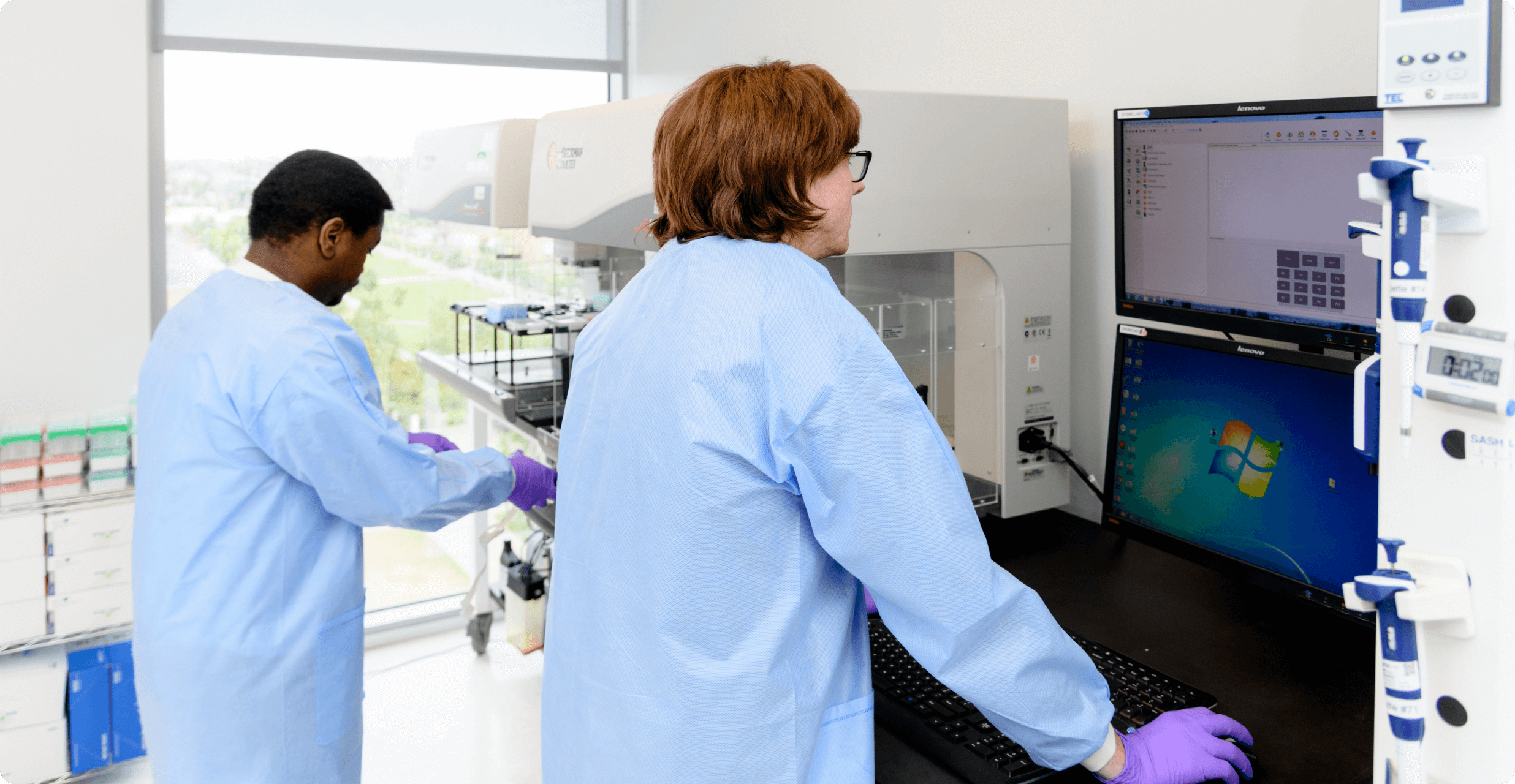Blog | Aug. 30, 2023
MRD in AML: the next step in fighting leukemia

The Johns Hopkins University has a long history of pioneering work in genetics and genomics. As the first medical school, founded in 1873 by its namesake benefactor Johns Hopkins (the unusual first name came from his grandmother’s surname), medical education at that time was a trade school, no undergraduate degree or other training was required. Johns Hopkins, with a $7M gift (equivalent to $150M in today’s dollars) was at that time the largest philanthropic endowment in US history. A hospital, a university with training colleges, and an orphanage were all established; the school of medicine was established in 1890.
Interestingly, Johns Hopkins was a pioneer across multiple medical practices in common use today, such as the use of sterile technique (1890), the establishment of gynecology as a medical specialty and the first use of pathology specimens to be examined under a microscopy (1893), even Victor McKusick ushered in the age of genetic medicine with his pioneering work on the inherited disease called Marfan Syndrome and the establishment of the first Department of Medical Genetics. He is acknowledged as the ‘father of genetic medicine’.
In this backdrop, Dr. Bert Volgelstein and Dr. Kenneth Kinzler published in 1999 a paper simply entitled ‘Digital PCR’ to enable digital detection of rare mutations, with a proof of their concept analyzing the mutant RAS oncogene in human stool samples.
A few years later the same group published in 2003 a paper extending the digital PCR concept from 96-well plates to water-in-oil droplet emulsions, which they called BEAMing, named after the four components of the method (beads, emulsions, amplification and magnetics). This method, not requiring microfluidics nor expensive specialized equipment but rather common laboratory reagents and equipment (a flow cytometer is used for the readout).
In 2008, with the publication (from the same group at Johns Hopkins) of this influential Nature Medicine paper “Circulating mutant DNA to assess tumor dynamics”, Inostics GmbH was founded in Hamburg Germany. A contraction of the words “individual diagnostics”, Inostics set out to offer the translational research and targeted pharmaceutical markets the first liquid biopsy testing service, first as an RUO service in 2008 followed by a CLIA (Clinical Laboratory Improvement Amendments) and GCP (Good Clinical Practice) laboratory service offering.
In 2011 Inostics established a testing laboratory in Baltimore (Maryland US) on the Johns Hopkins medical campus. Right about that time our head of operations shared this vision for the future of cancer detection as a brief video interview titled “What is the Symex Inostics Benefit for Patients?”, still valid today.
Many panels based upon the OncoBEAM technology were made available through the service laboratory’s offerings, and GCP laboratories were established in Kobe Japan and in Shanghai China. (A list of available OncoBEAM tests is online here.)
In 2013 Sysmex Corporation acquired Inostics along with a German flow-cytometry company Partec. For those not familiar with Sysmex Corporation, they have annual revenues of about $2.7B USD (298 B Japanese Yen), over 7,000 employees worldwide, and a very high market share of the hematology laboratory diagnostics market.
A few years after the acquisition, Sysmex Inostics launched and subsequently received a CE mark for an IVD kit version of the OncoBEAM assay (available only outside the United States) for RAS mutation detection in colorectal cancer, packaged along with specialized software and a flow cytometer from Sysmex Partec called the Cube 6i. The OncoBEAM RAS kit represented the first CE Mark IVD liquid biopsy assay available for routine patient care (For additional details, here’s the Sysmex Europe webpage describing OncoBEAM offerings for colorectal cancer.)
With decades of specialized diagnostic equipment design, manufacturing and support, Sysmex Corporation has many complementary offerings for analysis of blood.
For those not familiar with liquid biopsy, in brief the advantages over standard tissue biopsy are as follows:
Liquid biopsy is:
If you are a pharmaceutical company looking for a diagnostic partner for liquid biopsy, we may have exactly what you need – contact us today.